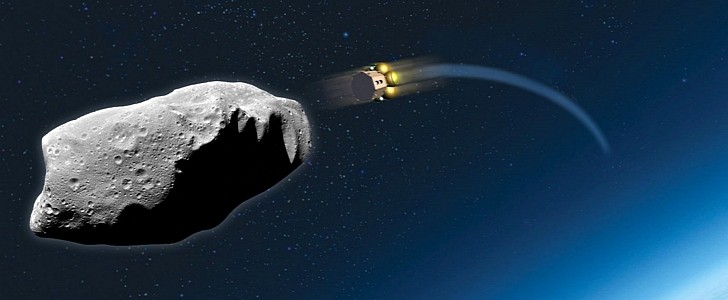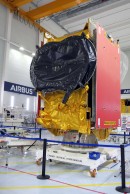Whether we like it or not, the risk of a catastrophic asteroid impact is real, and it could happen in just a few years. The good news is that, with the right amount of cooperation and preparation, something can be done about it, and it involves using “impacting” satellites.
UN’s “Asteroid Day” has been an important reminder, in the past few years, of the potential danger that Earth is facing. Almost 120 years ago, around this time, 80 million trees in the Siberian taiga were wiped out from the face of the Earth at the Tunguska event.
To prevent that from happening again, the UN also initiated the Space Mission Planning and Advisory Group (SMPAG), where nations that have launched vehicles into space are joining forces to develop the best strategy.
Since there are no spaceships right now that could just take off whenever is needed and prevent the asteroids from reaching our planet, satellites are the best solution. A Kinetic Impactor is a satellite turned ram, meaning it’s sent on the asteroid’s collision course for a planned impact. The kinetic energy resulting from it makes the asteroid deviate slightly from its course.
If this takes place far away and well in advance, it’s enough to prevent it from reaching the Earth.
Instead of building this heavy satellite, space experts at Airbus are considering repurposing existing telecom satellites. They already have the required weight and are easily available because they’re built on a regular basis. The next step would be adding a kinetic deflection (KD) module, with a separate propulsion system, a dedicated navigation system, and deep space communication capabilities, which would ram the asteroid and deflect it.
And there’d even be a mini-satellite on the module, equipped with a camera and ready to record and transmit the mission’s success, by separating just before impact.
It takes 6 to 18 months for a satellite to reach an asteroid far enough from Earth, and, according to the Airbus experts, we are around 3 years away from a possible impact. This means that a deflection mission should be ready to launch in 6 months.
We’re not there yet, but the idea of a repurposed satellite would ensure the fastest launch readiness, provided that the impactor module is ready and tested.
To prevent that from happening again, the UN also initiated the Space Mission Planning and Advisory Group (SMPAG), where nations that have launched vehicles into space are joining forces to develop the best strategy.
Since there are no spaceships right now that could just take off whenever is needed and prevent the asteroids from reaching our planet, satellites are the best solution. A Kinetic Impactor is a satellite turned ram, meaning it’s sent on the asteroid’s collision course for a planned impact. The kinetic energy resulting from it makes the asteroid deviate slightly from its course.
If this takes place far away and well in advance, it’s enough to prevent it from reaching the Earth.
Instead of building this heavy satellite, space experts at Airbus are considering repurposing existing telecom satellites. They already have the required weight and are easily available because they’re built on a regular basis. The next step would be adding a kinetic deflection (KD) module, with a separate propulsion system, a dedicated navigation system, and deep space communication capabilities, which would ram the asteroid and deflect it.
And there’d even be a mini-satellite on the module, equipped with a camera and ready to record and transmit the mission’s success, by separating just before impact.
It takes 6 to 18 months for a satellite to reach an asteroid far enough from Earth, and, according to the Airbus experts, we are around 3 years away from a possible impact. This means that a deflection mission should be ready to launch in 6 months.
We’re not there yet, but the idea of a repurposed satellite would ensure the fastest launch readiness, provided that the impactor module is ready and tested.






